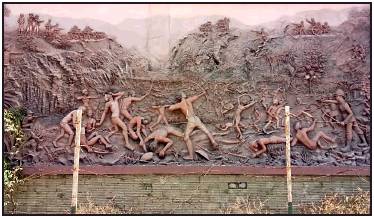Mangadh
(Created page with "{| class="wikitable" |- |colspan="0"|<div style="font-size:100%"> This is a collection of articles archived for the excellence of their content.<br/> Additional information ma...") |
Revision as of 09:03, 15 April 2019
This is a collection of articles archived for the excellence of their content. |
Massacre of November 17, 1913
The Bharatiya Tribal Party (BTP) and some organisations in Rajasthan are now highlighting what they say was a bigger massacre that took place at Mangadh in Banswara district on November 17, 1913, when an estimated 1,500 tribals were butchered by British troops.
“The tribals, who had refused to pay taxes to the local zamindars and resisted the colonisers for trying to destroy their culture, were wiped out by British troops in broad daylight. It is sad that this tribal uprising does not find the same place in history as the Jallianwala Bagh massacre, simply because the British had the support of local zamindars,” said BTP’s Rajasthan unit president Vela Ram Ghogra.
Chandra Shekhar Sharma, an expert on Mewar history, told TOI that though nearly 1,500 tribals were killed, no death toll is mentioned in British-era documents. “The documents, however, give a detailed account of how guns and cannons were ferried on mules to the hilly area of Mangadh and how the tribals were subjected to indiscriminate firing,” Sharma added.
Pressure from tribals forced Raj govt to erect ‘Shaheed Pillar’
L al Shankar Pardi, 75, a Banswara-based tribal activist says his grandfather, Sihu Pardi, was killed in the massacre. “My late father, Ponghar Pardi, then aged12, escaped miraculously,” he adds. “We demand an apology from Britain for the massacre of our elders,” said Lal Shankar.
Growing pressure from tribal groups in the last two decades has forced the last two governments in Rajasthan to erect a ‘Shaheed Pillar’ and a statue of Govind Guru, the spiritual leader of the tribals who had called the gathering, at the massacre site. A university, too, has been named after Govind Guru.
The massacre did not find a mention in school textbooks in Rajasthan till a decade ago. Apart from BTP, tribals groups like Sampa Sabha, Manav Jati Evam Jan Jagriti Sanstha, Bharatiya Adivasi Sangam and Pal Mahasabha have been demanding that November 17 be declared ‘martyrs day’. BTP came into existence in 2017 in Gujarat, raising the demand of separate state, ‘Bhil Pradesh’, by carving out tribal dominated districts of Rajasthan, Gujarat and MP. A resolution passed by BTP in 2017 demands that Mangadh be made its capital. BTP became politically relevant in last year’s assembly polls by winning two seats.
